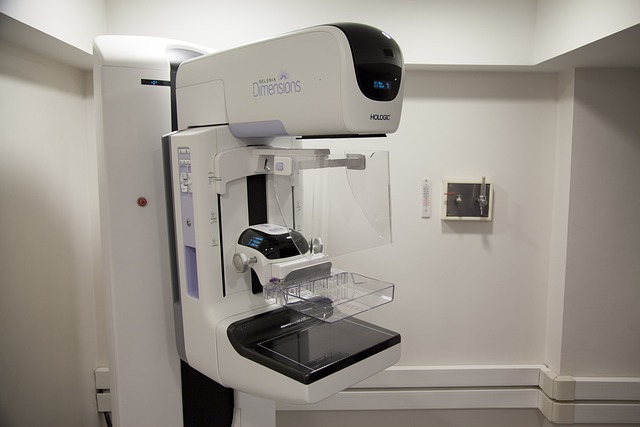Mammography technicians play an essential role in the healthcare industry as they perform mammogram examinations, which help detect and diagnose breast cancer. The professional mammographer makes it a goal to detect disease before it can advance to the point of being dangerous, allowing the patient to obtain treatment while the prognosis is still very favorable.
The importance of mammography technicians
Mammography is a low-dose X-ray imaging of breasts that can identify small lumps or abnormalities, often before they become large enough to notice. Early detection of breast cancer increases the chances of successful treatment and recovery, making mammography technicians critical healthcare team members.
Daily tasks and duties of a mammography tech
A mammography technician must be skilled in patient care and technical knowledge as they prepare patients for examination, position them correctly, operate sophisticated equipment, and capture high-quality images.

They must also maintain accurate records and collaborate with radiologists to interpret results. As such, it's a highly specialized field that requires extensive training and certification to ensure proper procedures are followed when administering screening exams.
How technology is changing the field of mammography
The field of mammography has undergone significant changes in recent years, largely due to advances in technology. New imaging techniques and tools have transformed how medical professionals assess and diagnose breast cancer, enabling earlier detection and more effective treatment. This shift has led to a greater emphasis on continuing education among healthcare practitioners, who must keep up with the latest developments in order to provide the best possible care for their patients.
One major technological breakthrough in mammography is digital mammography, which produces images that can be stored electronically and easily shared with other medical professionals. This allows for faster diagnosis and treatment planning while reducing the need for repeat tests. Additionally, 3D mammography (tomosynthesis) provides more detailed images of breast tissue than traditional 2D scans, allowing doctors to detect even small abnormalities that may indicate early-stage cancer.

Education and Training: Your Path to the Mammography Certificate
The first requirement to become a mammography tech is obtaining an associate's degree or higher in radiologic technology from an accredited institution. This degree program covers the fundamentals of radiologic imaging, radiation safety, anatomy, physiology, and patient care. Upon completing the program, graduates are eligible to take the American Registry of Radiologic Technologists (ARRT) certification exam.
The second requirement for becoming a mammography tech is obtaining ARRT Mammography Certification. The ARRT exam demonstrates that you have met the educational and clinical requirements to perform mammograms safely and accurately. To be eligible for this certification, candidates must have completed an ARRT-approved education program in mammography and have at least 40 hours of documented hands-on experience performing mammograms under the supervision of a qualified technologist.
Employment Outlook: Job growth and demand for mammography techs
The employment outlook for mammography techs is bright. According to the Bureau of Labor Statistics, the demand for mammographers is expected to grow by 12% through 2028. This growth can be attributed to an aging population that requires more screening and diagnostic procedures.
Mammographers earn a median annual salary of $62,280 as of May 2019, according to the Bureau of Labor Statistics. However, this figure can vary depending on factors such as level of education and experience. Mammography techs with certifications or specialized training in areas such as breast ultrasound may receive higher salaries.
A fulfilling career path with opportunities for growth
In addition to a competitive salary, mammography techs also receive job satisfaction from knowing they are helping patients detect and diagnose breast cancer early. Completing the certificate program and going to work in this field of radiology literally saves lives. With job growth projected to continue in this field, becoming a mammography tech can be a rewarding career choice for those interested in healthcare and helping others.
Mammography Technician Career FAQ
What is a Mammography Technician?
A Mammography Technician is a healthcare professional who performs mammograms, which is a low-dose X-ray of the breast, to detect breast cancer and other breast abnormalities. They work alongside a radiologist and other healthcare professionals to help diagnose and treat breast cancer and other diseases.
What kind of training is required to become a Mammography Technician?
Aspiring Mammography Technicians must complete a certificate program or an associate's degree program in mammography, including classroom education and clinical practicum. The program must be approved by the American Registry of Radiologic Technologists (ARRT) and meet the eligibility requirements for mammography certification. You must also receive hands-on training in mammography technology through clinical experience, which is usually completed at a hospital or an imaging center.
How can I obtain ARRT certification in mammography?
After completing an ARRT-approved educational program in mammography and meeting the clinical experience requirements, you can apply for the ARRT mammography certification exam. You must first register with the ARRT and submit the application form, the necessary fees, and required documentation. Once your application is approved, you will be given a date and location to take the certification exam. If you pass the exam, you'll receive the ARRT mammography certification.
What are the advantages of becoming a certified Mammography Technician?
Becoming a certified Mammography Technician shows that you have completed an approved educational program and met the clinical experience requirements in mammography. You have demonstrated your knowledge and skills in performing mammograms, which can help you advance in your profession. It also increases your job opportunities and earning potential in the healthcare industry.